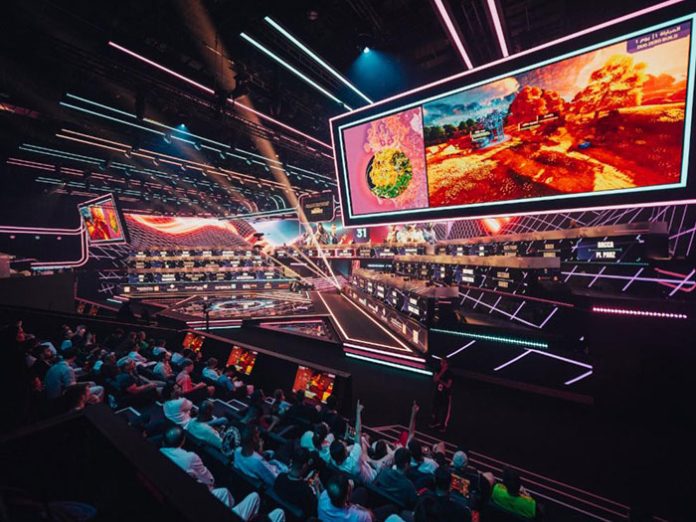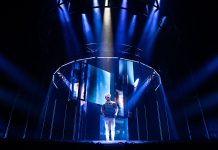Gamers8 has become a globally recognised Esports tournament. Taking place in Riyadh over eight weeks, this year’s ‘Land of Heroes’ event kicked off on 6 July, bringing together gaming enthusiasts who competed to take home cash prizes and the Gamers8 trophy.
The production behind Gamers8 consisted of a host of live concerts, attractions, and entertainment shows. A line-up of artists and DJs, including Afrojack, Macklemore, Iggy Azalea, Imagine Dragons and more.
bright! studios were responsible for the media playback and virtual production of the gaming tournament elements of the event. bright! worked alongside other production companies and a pool of freelance technicians to take care of on-site virtual production, as well as augmented reality, lighting design and show control.
“Gamers8 is an incredibly big project,” began Leon Herche, creative producer at bright! studios. “Stage Precision’s SP platform was imperative to the work we were doing, as it was able to handle and control many different hardware and software platforms. We had around 30 Unreal Engine machines, 28 tracked cameras and 36 disguise servers that were all controlled using SP.”
Gamers8 was made up of several battles, including; Dota 2, Fortnite, Rocket League, Rainbow Six Siege and PUBG Mobile which all returned to the festival for 2023, while CS:GO, StarCraft: Remastered, Starcraft II, Tekken 7, Street Fighter 6, PUBG, R1 and FIFA were played for the first time.
“We used 14 different SP PCs across the whole event,” commented Herche. “Every stage has two studios, one in Arabic and one in English and the platform took care of show control, including all the AR elements, as well as controlling and manipulating tracking data, lens calibration and alignment across the event, too. It also allowed us to get data from the games and APIs (Application Programming Interface) and send it to Shield and Media servers at the same time.”
Shield managed camera tracking inputs, splits scenes into fore-and background render passes, applies lens distortion and renders object passes for matte applications. In addition, it takes care of data in- and outputs for scene control and device integration.
“We handled three different APIs per game,” furthered Herche. “One would show the winning team, and we’d then use disguise media servers to display their name or photo. Shield displayed 3D scans of the players, and another API gave us statistics from a database, which we displayed using Unreal Engine as well. This is how we were able to create a completely immersive experience for the audience.”
Stage Precision’s SP platform also handled the opening ceremonies that took place to mark the start of the weekly tournaments. bright! used Unreal Engine with Shield plugin and SP to play AR and video content at the same time, while creating a timeline and rendering multiple systems at once.
“The reason we chose SP for this year’s event is because we were so impressed by it at the inaugural event,” concluded Herche. “We were able to calibrate the lens before the whole build was even finished, which massively reduced the set-up time. Additionally, using SP gave us unlimited flexibility. For the whole show control, there are of course other solutions available, but Stage Precision’s SP platform allowed us to trigger different systems and have queue lists and dashboards. This was essential in helping us deliver another incredible show.”





